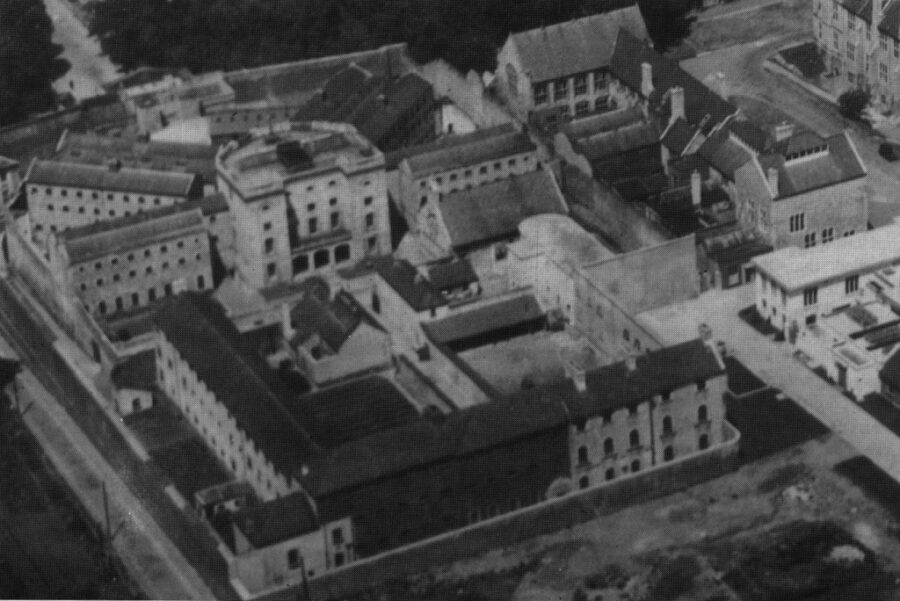
Kieran’s Our City, Our Town Article,
Cork Independent, 17 November 2022
Journeys to an Irish Free State: Questions of Sanitation
Across October and November 1922, there were regular debates in the press commenting on the condition of internees in Cork’s gaols – namely the City Gaol and County Gaol. During the Civil War it is estimated that over 14,000 men were interned by the Irish Free State in gaols across the country. Due to such a large number, public pressure for release for such prisoners and calls for lessening the internee population in such confined cell spaces were common place.
On 10 October 1922 at the meeting of the public health committee of the Cork Corporation Alderman Seán O’Sullivan presided. The Cork Examiner recorded that Councillor Gamble asked if it were known that there had been an outbreak of diphtheria in the County Gaol, and that some of the prisoners had been conveyed to the Fever Hospital. The outbreak, he was informed, was due to bad sanitary arrangements. He continued to ask what was the role of Dr O’Donovan, who was in charge of the health of the city, in remedying the sanitary conditions.
Mr William Ellis, Deputy Lord Mayor, noted that he had called attention to the sanitation and Councillor Barry Egan and himself had already gone to the military authorities. They were received by General Emmet Dalton who told them that Dr Donovan would get permission to visit the gaol. However, when a letter was forwarded to Dr Donovan, the doctor noted apprehensively that the matter was outside his locational jurisdiction that the County Gaol fell in the jurisdiction of the Cork Rural District Council.
Deputy Lord Mayor, William Ellis, then relayed that he had immediately got onto public health committee of the district council. However, they noted that they had no control whatever over the public healthy practicalities within the County Gaol. They had though sent their Medical Doctor of Public Health, Dr D Gleeson, to express their concerns to General Dalton.
The Deputy Lord Mayor in his concluding remarks noted: “Where the lives of five or 600 men are involved they could not stand by professional etiquette or red-tapeism. I understand however, that the doctor has no power to go into the gaol, but they should take whatever action was possible to safeguard the health of citizens”.
On 14 October 1922, at the Cork Rural District Council Mr Micheál Ó Cuill, Chairman, presided and raised the sanitation issue at the County Gaol. The Cork Examiner detailed that the engineer that was present reported that many complaints had been made to him has to the existence of a very bad stench in the vicinity of the bridge near the gaol. During investigation he found that this was due to two damaged openings to the sewer. These acted as outlets when the sewer was over charged, discharging the excess sewage into the river. This took place during heavy rain.
In addition, the engineer noted that the Corporation of Cork were responsible for the upkeep of the stone weir at the waterworks upstream. Until the gaps in the weir were made good practically all the water would continue to flow down the north channel leaving the south channel as an open sewer not being flushed out by the river.
At the meeting a notification of three cases of diphtheria in the County Gaol were highlighted. The Medical Officer of Health of the Rural District Council Dr Gleeson visited the gaol and had a personal interview with Commandant Scott. The patients suspected of having diphtheria were removed to the Fever Hospital and the cells in which they were confined or disinfected under the supervision of the Medical Officer of the National Army forces, Dr Kelly.
At the meeting of the Council of Cork Corporation on 10 November 1922, Alderman O’Sullivan presided. The Cork Examiner reported that the Town Clerk read the following letter: “W. Ellis, Esq, Deputy Lord Mayor, Cork. A Chara, I am directed to inform you that a deputation of ladies from the Republican Prisoners’ Relatives Committee intend to lay before the Corporation at its meeting this evening the treatment of prisoners in Cork gaols at present, and as to the sanitary conditions there, with a view to requesting the Corporation to appoint a committee to investigate these and other facts forthwith. I am also directed to ask you to be so good as to allow the deputation to lay its facts briefly before the Corporation under your privilege”.
When the deputation arrived, Miss O’Mahony, who spoke for the delegation, said that apart from the “sufferings of the men” they felt that unless drastic action was taken by the Corporation an epidemic of disease would break out in the city, and then the Corporation would have to bear the responsibility. She deemed that the sanitary conditions were appalling – “the dirt of the place was indescribable, and clothes were in an unspeakable condition”.
The delegation proposed that the Corporation of Cork appoint a committee to inquire into the conditions at the gaol, and demand permission from the military authorities to enter the gaol and see the conditions for themselves;
“Such an investigation would relieve the anxiety of the relatives and friends of the prisoners. A good many persons didn’t know whether their relatives who had been arrested were alive or not. An agitation had gone on in Dublin, but the Provisional Government had so far refused the demand for an investigation. If all was well with the prisoners, there should be no hesitation about allowing a committee to carry out an inspection”.
The proposal was carried a committee of seven councillors were tasked with approaching General Emmet Dalton.
Caption:
1177a. Cork County Gaol adjacent UCC, c.1920; it is now the site of the Kane Science Building. Only the entrance portico has survived (source: Cork City Library).